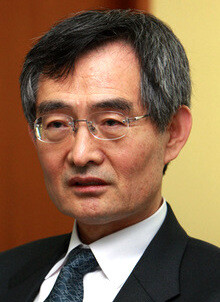hankyoreh
Links to other country sites 다른 나라 사이트 링크
439 civilians confirmed dead in Yeosu-Suncheon Uprising of 1948

The Truth and Reconciliation Commission said yesterday that it has confirmed at least 439 civilians were killed in a massacre known in Korea as the Yeo-Sun incident, which took place about six decades ago in Yeosu and Suncheon, two villages in South Jeolla Province.
The Yeo-Sun incident erupted in October 1948 when approximately 2,000 left-wing soldiers rebelled against the government in protest against its heavy-handed clampdown on an uprising on the southern island of Jeju months earlier. The rebels, frequently referred to as “partisans,” staged guerrilla-style fights against the military and took cover on Mount Baekun and Mount Jiri. When the government intervened to quash the uprising, a large number of civilians lost their lives.
“Suncheon is the area with the highest number of civilian casualties. According to testimony by eye witnesses and the families of the victims, the number of people killed has been confirmed at 439,” the commission said. “If you include those people whose whereabouts have not been confirmed, the figure could increase further, to 2,000.”
The commission said that most civilians were killed by the military, which believed that they must have provided food, shelter and other assistance to the rebel troops, or they may have lost their lives because they happened to be living in areas of combat. The commission also confirmed in the process of its investigation that the military recklessly arrested civilians and used violence or torture on them.
During the uprising, the government instituted martial law. With regard to this, the commission said, “There were no legal grounds for such an action. The field commander must have illegally arrested and killed civilians based on his own interpretation of the law. This is an illegal act going beyond the purview of martial law.”
The commission said that then President Syngman Rhee and the Defense Ministry are ultimately responsible for the civilian casualties, even though the direct order must have come from the field commander. It called on the government to offer an official apology for the massacre and provide financial support for activities to commemorate those who lost their lives in the massacre. The commission also demanded that the government include the massacre in official materials and strengthen education about the historical facts of the massacre for students and members of the military.
Kim Deuk-joong, a history researcher at the National Institute of Korean History, said, “The Yeo-Sun incident provided the Rhee administration with an excuse for enacting the National Security Law and establishing a strongly anti-communist nation in his early days as president.”
Please direct questions or comments to [englishhani@hani.co.kr]
Editorial・opinion
![[Column] Season 2 of special prosecutor probe may be coming to Korea soon [Column] Season 2 of special prosecutor probe may be coming to Korea soon](https://flexible.img.hani.co.kr/flexible/normal/500/300/imgdb/original/2024/0426/3317141030699447.jpg) [Column] Season 2 of special prosecutor probe may be coming to Korea soon
[Column] Season 2 of special prosecutor probe may be coming to Korea soon![[Column] Park Geun-hye déjà vu in Yoon Suk-yeol [Column] Park Geun-hye déjà vu in Yoon Suk-yeol](https://flexible.img.hani.co.kr/flexible/normal/500/300/imgdb/original/2024/0424/651713945113788.jpg) [Column] Park Geun-hye déjà vu in Yoon Suk-yeol
[Column] Park Geun-hye déjà vu in Yoon Suk-yeol- [Editorial] New weight of N. Korea’s nuclear threats makes dialogue all the more urgent
- [Guest essay] The real reason Korea’s new right wants to dub Rhee a founding father
- [Column] ‘Choson’: Is it time we start referring to N. Korea in its own terms?
- [Editorial] Japan’s rewriting of history with Korea has gone too far
- [Column] The president’s questionable capacity for dialogue
- [Column] Are chaebol firms just pizza pies for families to divvy up as they please?
- [Column] Has Korea, too, crossed the Rubicon on China?
- [Correspondent’s column] In Japan’s alliance with US, echoes of its past alliances with UK
Most viewed articles
- 1After election rout, Yoon’s left with 3 choices for dealing with the opposition
- 2Why Kim Jong-un is scrapping the term ‘Day of the Sun’ and toning down fanfare for predecessors
- 3Two factors that’ll decide if Korea’s economy keeps on its upward trend
- 4Noting shared ‘values,’ Korea hints at passport-free travel with Japan
- 5AI is catching up with humans at a ‘shocking’ rate
- 6Why Korea shouldn’t welcome Japan’s newly beefed up defense cooperation with US
- 7‘We must say no’: Seoul defense chief on Korean, USFK involvement in hypothetical Taiwan crisis
- 8Exchange rate, oil prices, inflation: Can Korea overcome an economic triple whammy?
- 9Terry Anderson, AP reporter who informed world of massacre in Gwangju, dies at 76
- 10[Reportage] On US campuses, student risk arrest as they call for divestment from Israel